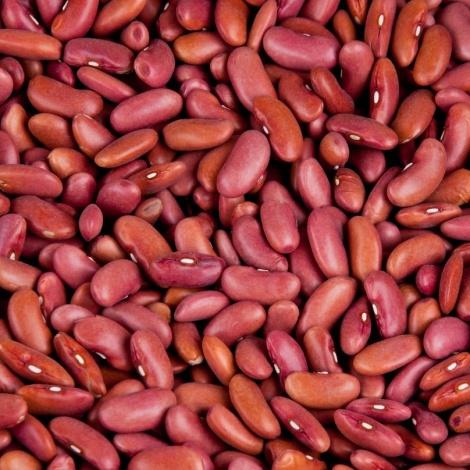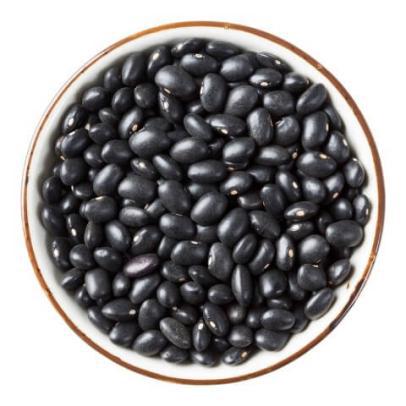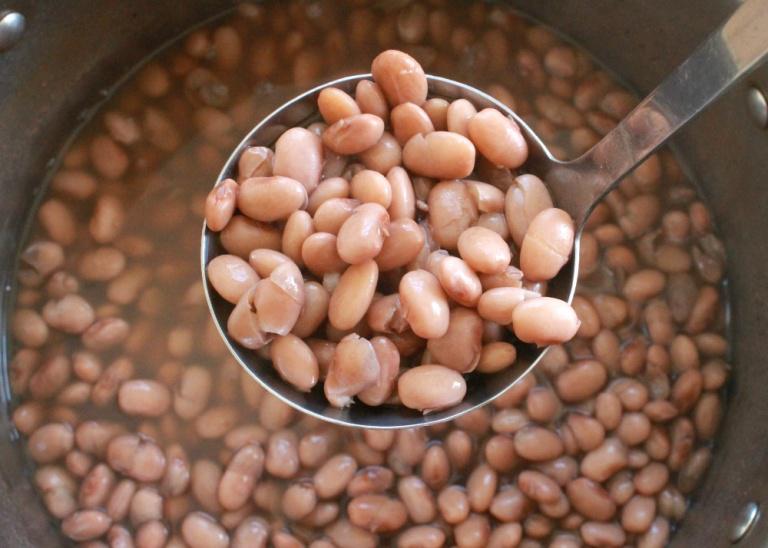Beans and legumes belong to a family of plants called Fabaceae. Commonly eaten around the world, they provide you with loads of fiber and B-vitamins. Anyone interested in getting more protein without having to eat more meat can always rely on beans and legumes. However, you should educate yourself about the healthiest legumes and beans to eat, as some of them may not be as healthy as you might think. Let's find out more about it.
Healthiest Legumes and Beans to Eat
Beans and legumes are considered healthy because they are rich in protein, dietary fiber, and B-vitamins. However, you should put some thought into selecting the best legumes and beans to get additional vitamins and minerals. Regular intake of healthy legumes and beans helps improve cholesterol levels, reduces blood sugar, and promotes better digestive health. You can easily add them to salads, stews, and soups to enjoy some amazing benefits. Here are some of the healthiest legumes and beans to eat:
1. Chickpeas
 Also called garbanzo beans, chickpeas are healthy because they provide you with loads of protein and fiber. A cup of cooked chickpeas provides you with about 14.5g of protein, 12.5g of fiber, and 84% of your recommended daily intake of manganese. Each serving offers only 269 calories, which is why you can include chickpeas in your weight loss diet. Studies show that chickpeas also lower your risk for heart disease. Regular intake is supposed to stabilize your blood sugar levels and improve insulin sensitivity. By providing you with dietary fiber, it promotes the growth of beneficial bacteria in your gut, which in turn improves your overall health.
Also called garbanzo beans, chickpeas are healthy because they provide you with loads of protein and fiber. A cup of cooked chickpeas provides you with about 14.5g of protein, 12.5g of fiber, and 84% of your recommended daily intake of manganese. Each serving offers only 269 calories, which is why you can include chickpeas in your weight loss diet. Studies show that chickpeas also lower your risk for heart disease. Regular intake is supposed to stabilize your blood sugar levels and improve insulin sensitivity. By providing you with dietary fiber, it promotes the growth of beneficial bacteria in your gut, which in turn improves your overall health.
2. Lentils
Considered one of the best sources of vegetarian protein, lentils work amazingly well to stabilize your blood sugar levels and promote better health. Each cup of lentils contains about 230 calories with 17.9g of protein and 15.6g of fiber. It also provides you with 90% of your recommended daily intake of folate. Some scientific studies have found that including lentils and other legumes in your diet can help lower your risk for diabetes. Lentils are also good for your digestive system because they slow the rate of gastric emptying and improve bowel function. They also work amazingly well to reduce bad cholesterol levels.
3. Kidney Beans
 Kidney beans are among the most commonly consumed beans and are also on the list of healthiest legumes and beans to eat because each serving offers about 13.6g of fiber and 13.4g of protein. A cup of cooked kidney beans provides you with 23% of your recommended daily intake of folate and 22% of your RDI of manganese. It is also a good source of thiamine, iron, and copper. Like other healthy beans, it provides you with fiber that slows down the rate at which your body absorbs sugar from food. By regulating your blood sugar level, kidney beans lower your risk of diabetes. It prevents spikes in blood sugar levels, which in turn keeps you from dealing with hunger pangs. It is due to this blood sugar regulating effect that kidney beans can be a part of your weight loss diet.
Kidney beans are among the most commonly consumed beans and are also on the list of healthiest legumes and beans to eat because each serving offers about 13.6g of fiber and 13.4g of protein. A cup of cooked kidney beans provides you with 23% of your recommended daily intake of folate and 22% of your RDI of manganese. It is also a good source of thiamine, iron, and copper. Like other healthy beans, it provides you with fiber that slows down the rate at which your body absorbs sugar from food. By regulating your blood sugar level, kidney beans lower your risk of diabetes. It prevents spikes in blood sugar levels, which in turn keeps you from dealing with hunger pangs. It is due to this blood sugar regulating effect that kidney beans can be a part of your weight loss diet.
4. Peas
Peas have to be on the list of healthiest legumes and beans to eat because each cup of cooked peas offers about 8.8g of fiber and 8.2g of protein with only 125 calories. You also get about 48% of your recommended daily intake of vitamin K and 30% of your recommended daily intake of thiamine. Studies have found that including peas in your diet helps you lose weight more effectively. Similarly, eating 1.8 ounces of pea flour a day may help reduce insulin resistance. Thanks to the availability of dietary fiber, pea flour also works amazingly well to improve your digestive health. It increases stool frequency and also keeps your blood sugar levels from going up after a meal. Some studies have also shown that fiber in pea flour helps reduce blood triglycerides.
5. Black Beans
 Each cup of cooked black beans offers 227 calories along with 15g of fiber and 15.2g of protein. Consider including black beans in your diet because they are packed with manganese, folate, thiamine, and iron. You can eat black beans even if you have diabetes because they have a low glycemic index. You should consider eating rice with black beans because they will ensure a smaller rise in your blood sugar levels after a meal.
Each cup of cooked black beans offers 227 calories along with 15g of fiber and 15.2g of protein. Consider including black beans in your diet because they are packed with manganese, folate, thiamine, and iron. You can eat black beans even if you have diabetes because they have a low glycemic index. You should consider eating rice with black beans because they will ensure a smaller rise in your blood sugar levels after a meal.
6. Soybeans
Soybeans deserve a place in your diet because they are rich in protein. A cup of cooked soybeans offers about 28.6g of protein along with 10.3g of fiber. Each serving offers about 298 calories. Other than fiber and protein, it also provides you with iron, manganese, vitamin K, folate, and riboflavin. Interesting, you also get 42% of your RDI from each cup of soybeans. Isoflavones found in soybeans are supposed to reduce your risk of cancer. Many studies have found that soybeans are more beneficial for women because they help improve levels of estrogen in the body. Eating soybeans along with other calcium-rich foods may help improve bone density in postmenopausal women.
7. Pinto Beans
 Commonly eaten as whole beans, pinto beans are extremely popular around the world. Each cup of cooked pinto beans contains 245 calories along with 15.4g of fiber and 15.4g of protein. Each serving also gives you a good dose of copper, manganese, folate, and thiamine. Studies show that eating pinto beans daily may help reduce bad cholesterol levels. There is some evidence suggesting that pinto beans increase the production of a short-chain fatty acid that improves your digestive health.
Commonly eaten as whole beans, pinto beans are extremely popular around the world. Each cup of cooked pinto beans contains 245 calories along with 15.4g of fiber and 15.4g of protein. Each serving also gives you a good dose of copper, manganese, folate, and thiamine. Studies show that eating pinto beans daily may help reduce bad cholesterol levels. There is some evidence suggesting that pinto beans increase the production of a short-chain fatty acid that improves your digestive health.
8. Peanuts
Many people do not know that peanuts are actually legumes and are quite beneficial for your overall health. They serve as a good source of polyunsaturated fats, monounsaturated fats, B-vitamins, and protein. One half-cup of peanuts provides you with 427 calories along with 5.9g of fiber and 17.3g of protein. They are high in calories, but they also provide you with loads of manganese, magnesium, niacin, vitamin-E, and thiamine. They also contain monounsaturated fats that lower your risk of stroke, heart disease, diabetes, and cancer. Eating peanut regularly may also reduce blood cholesterol levels.